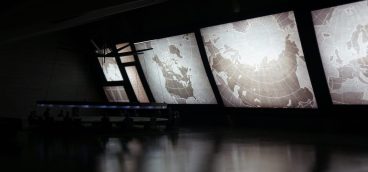It Takes a Village (To Move All That Gold)

My client, Goldie, had spent many annoying decades conducting gold inventories in remote Swiss villages, and now I’d just been informed that it had been totally unnecessary.
Previously in this series: Goldie, Part III
“But … but …” I said.
The Pictet partner explained that while the army’s original strategy (to pull back into the mountains) may have made military sense, it was deeply controversial with the Swiss public. After all, the army was planning to abandon 80% of the Swiss population to the tender mercies of the Russians.
“The pressure became so strong,” he continued, “that the army had no choice but to change its strategy. So while it’s true that the mountains remain a huge alpine fortress, since 1959 our strategy has been to contest every inch of Swiss soil.”
“Are you absolutely sure about this?” I said.
“Dr. Curtis,” said the Pictet partner, “I am a colonel in the Swiss army reserve. I believe that I understand our country’s military strategy.”
I stared at the lunch table for a long moment, then said, “But how long could the Swiss possibly hold out against the Russians?”
“Alone?” said the partner. “Maybe a few days. But you see, Dr. Curtis, Swiss neutrality has always been, shall we say, situation-specific – it wouldn’t survive for an instant if the Russians invade. And in that case we would have plenty of help from the French, Italians and Brits. Any Russian advance would be slowed until you Americans could get your act together and come over here and save us.”
Back home I gave Goldie the bad news and she wasn’t happy. “Why the hell did nobody tell me about this!” she cried. I gave a helpless shrug. She said, “Those bastards at Credit Suisse will be hearing from me!”
Goldie must have had a pointed conversation with a senior officer at Credit Suisse, because she told me he’d apologized profusely and offered Goldie a discount on a large vault under the bank’s headquarters in Zurich if she wanted to move her gold back to the city.
Goldie did want to move her gold back. That is, she wanted me to move it back.
I told Goldie I’d be happy to oversee the process, along with Dr. Brenner, her Swiss lawyer. I didn’t think there would be much to it – you hire an armored car and it goes around and picks up the gold and brings it to Zurich. No problem.
But when Dr. Brenner called the armored car company and outlined what we needed, things got complicated. They told him that to transport that much bullion they would need a very large armored car and that vehicle would be heavy even empty. Add all that bullion and the tiny roads and bridges in the Alps wouldn’t be able to handle the load.
In addition, the armored car would need a lot more security than just the driver and his helper. We would need cops, lots of them.
What would have to happen is that a much smaller armored vehicle – when I saw it it looked like a pickup truck – would have to travel to each branch bank, pick up the gold, drive it to Zurich, then return to the next village. It would be escorted all the way by Swiss cops.
But that would take forever, so Dr. Brenner called a halt and called me. After a lot of discussion we decided that the most sensible way to handle this, since neither of us knew what we were doing, would be to organize a task force of people who actually did know what they were doing.
So that’s what we did. The task force included Dr. Brenner and me, Frank Bolding from Price Waterhouse, plus representatives from Credit Suisse, Lloyd’s of London, and the armored car company. In addition, we added representatives from the Zurich cantonal police, where the gold would end up, and from the Graubünden cantonal police, where most of the mountain villages were located.
At the very first meeting of the task force the police representatives strongly recommended that we involve the Swiss army. The Zurich and Graubünden cops had authority in their respective jurisdictions, but in-between Graubünden and Zurich they were basically just heavily armed civilians. So we added a lieutenant colonel in the Swiss military police to our task force.
The new plan as proposed by the armored car supervisor was for five smaller armored cars – the aforementioned pickup trucks – to fan out to the five villages, pick up the bullion and bring it back to Zurich. But that proved to be impractical.
In the first place, no one had access to the alpine vaults except me, and I couldn’t be in five places at once. Besides that, too many security escort vehicles would be needed.
In the end we used only one of the smaller vehicles, which traveled to each of the mountain villages and then back to the big armored car, which was parked at a Swiss military base near the town of Chur. During those trips the smaller vehicle was escorted by the Graubünden cops (and me).
Once all the bullion was aboard the big armored car, a convoy headed to Zurich, a ninety minute drive up Route 3. The convoy was led by an army vehicle containing four heavily armed military cops, then the armored car, then Dr. Brenner, Frank Bolding, and me in Bolding’s car.
All went well until we reached the Zurich cantonal border on the west side of the Zürichsee. At that point we were met by the Zurich cops, who would escort us to the Credit Suisse vault under the Bahnhofstrasse. But when we stopped at a service plaza to introduce everyone and get our briefing on how we would proceed from there, a cop told Dr. Brenner that his office needed to speak to him urgently.
Dr. Brenner rushed inside the restaurant and I watched as he dropped coins into the pay phone. He spoke to someone in his office for a few minutes, then gestured for me to meet him off to the side, away from the other people. I could tell from the look on his face that something was badly amiss.
Next up: Goldie, Part 5













